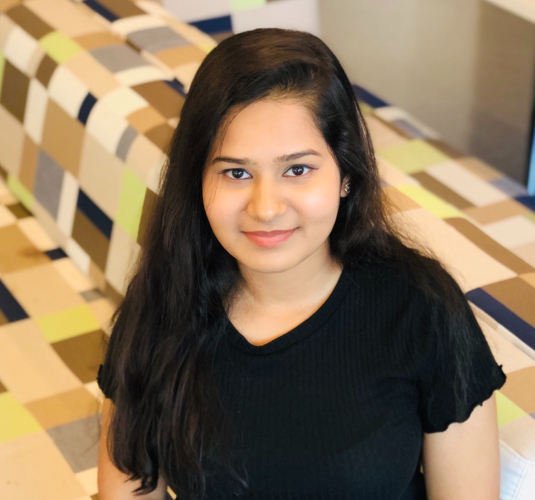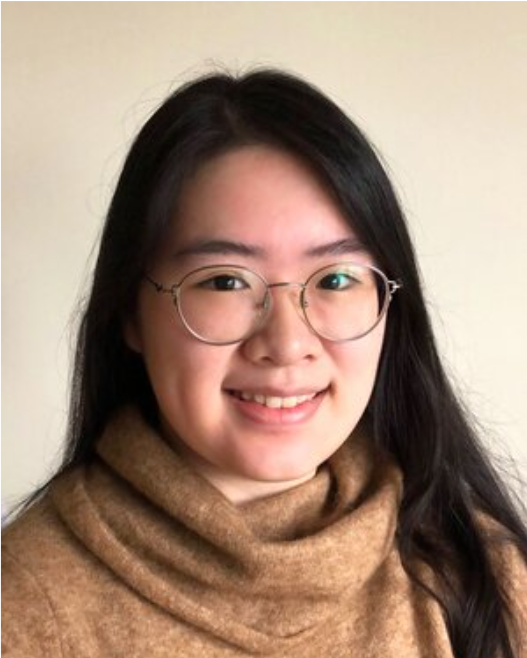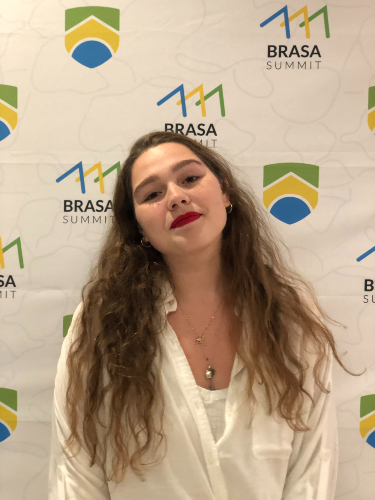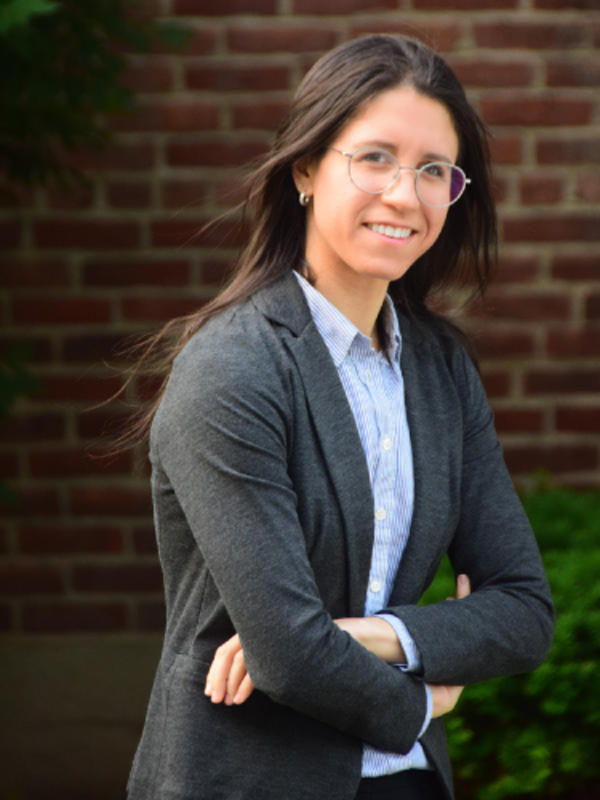Hannah Prensky | Lopatkin Lab
June 2021
For my summer 2021 research project, I am working in the Lopatkin Lab at Barnard College to study bacterial conjugation. Conjugation is one type of horizontal gene transfer, and we are concerned with studying this topic because conjugation is one of the main ways antibiotic resistance spreads. Antibiotic resistance genes can be carried on plasmids, extra-chromosomal fragments of DNA, that move through a population from a donor cell to a recipient cell through direct cell-to-cell contact. This process can happen so quickly and efficiently that an entire infection can become resistant to the 10-15 most commonly used antibiotics in a matter of minutes, rendering a disease completely untreatable. We published a paper in the spring semester about a newly discovered phenomenon called the plasmid acquisition cost, which we describe as the temporary energetic burden cells experience after they first acquire a new plasmid through conjugation. We find that cells grow slower with longer lag times immediately after acquiring a new plasmid with antibiotic resistance genes. This research is important because it helps us predict the spread of plasmid-encoded antibiotic resistance with higher accuracy than ever before.
This summer, I will continue studying acquisition costs in an effort to propose a molecular mechanism behind the effects on cell growth. Specifically, I will be looking at plasmid-specific factors that impact the acquisition cost. In our first paper, we used a variety of donor and recipient combinations, but in this project, we will be controlling for plasmid-specific effects by using the same recipient strain in the entire study. Also, in our first paper, we analyzed a total of 16 different plasmids and conditions, whereas by the end of the summer, we hope to have data for at least 40 different plasmids. To reach this goal, I will be conducting as many acquisition cost experiments as I can with the plasmids we have, as well as isolating new plasmids to test from pathogenic strains provided by the CDC. These CDC strains are clinically relevant as many of them were isolated from patient infections. While I’ve conducted acquisition cost experiments in the past, I have never isolated plasmids from clinical strains, so I will be learning new experimental techniques throughout the duration of the summer.
I am thrilled to be training [new students in the lab] because when I first started working in biological laboratories, the lab members who trained me made a huge impact on my summer and research career! Since I am graduating at the end of next year, nothing makes me happier than knowing I’ll be passing along my projects to younger Barnard students who can take the project in new and exciting directions.
Importantly, I wouldn’t be able to reach our summer goal alone. Another major aspect of my research position this summer will be to help train other students who are new to the lab. I have been lucky enough to work in-person in the Lopatkin Lab since the Fall 2020 semester, but since capacity was limited, there are several students who are starting their experimental positions now for the Summer Research Institute (SRI). I am thrilled to be training them because when I first started working in biological laboratories, the lab members who trained me made a huge impact on my summer and research career! Since I am graduating at the end of next year, nothing makes me happier than knowing I’ll be passing along my projects to younger Barnard students who can take the project in new and exciting directions.
Tamima Sultana | Kissileff Lab
July 2021
I’m a rising senior at Barnard and I’m majoring in general biology. Currently, I’m a research assistant at the Kissileff Lab in the Diabetes, Obesity, and Metabolism Institute at Mount Sinai. I have been conducting clinical research on food behaviors and eating mechanisms on bariatric surgery
candidates. Our lab has devised a novel procedure coined as Virtual Portion Creation Tasks (VPCTs). The objective of this study was to determine whether portions created in VPCTs demonstrate retest reliability and responsiveness to factors known to influence food intake, such as eating contexts and food types.
We’re investigating whether virtual portion sizes can represent actual intake, and thus can be considered proxies for intake. VPCTs present a computer simulation to participants who can then create their intakes given context(s). My project is part of the larger clinical study trials that aim to find potential pre-operating predictors of success for bariatric surgery (Roux-en-Y Gastric Bypass vs. Vertical Sleeve Gastrectomy). My project focuses on the validation of VPCTs of beverages as measures of liquid intake.
Due to the ongoing pandemic, we are adapting and finding new ways to safely collect data from participants. I’ve been conducting research since my freshman year of high school, which has allowed me to develop skills such as critical thinking, time management, and collaboration. Barnard and Columbia’s STEM classes and my advisors have further inspired me to continue my research endeavors. I’m very grateful to be within a community that promotes collaborative learning and personal growth. We have a plethora of resources here from our external PI to our advisor or to our renowned faculty. I know that whether I need to review my results, pinpoint which statistical analysis I need to choose, or study trends, I can always ask my mentors for advice, support, and guidance.
Barnard and Columbia’s STEM classes and my advisors have further inspired me to continue my research endeavors. I’m very grateful to be within a community that promotes collaborative learning and personal growth. We have a plethora of resources here from our external PI to our advisor or to our renowned faculty.
Vivian Zhao | Losonczy Lab
July 2021
My summer research is focused on understanding the computation of glutamate dynamics in murine hippocampal neurons. At the Losonczy Lab, we are working to establish missing links between cellular/network processes in the hippocampus to elucidate the mechanisms of learning and memory. I joined this lab because I was fascinated by their approach to studying synaptic transmission using novel high-resolution functional imaging and cell-type specific perturbations. Findings from this project will allow us to see how molecular processes in the brain can dictate behavioral changes. Understanding the basis of learning and memory formation is a key step toward understanding how we are able to perceive and build a complex interpretation of the external world.
Our workflow begins with equipment design and assembly, followed by surgery, mouse training, electroporation, data collection, 3D reconstruction of cell morphology, and data analysis. With so many procedures involved in our project, one of my goals for the summer is to become fluent in every step of the process. My tasks for the first month have focused on the first and third steps: I have been building cannulas for implantation during surgery, assembling mouse training rigs, soldering circuit boards that help track rig movement, and training water-deprived mice how to run on the rig. Beginning this month, I will be performing mouse surgeries, collecting optical data, and reconstructing cells in addition to my current responsibilities. We are hoping to obtain some interesting results by the end of the summer, and I am very excited to take on more steps of the process so that our team can get closer to our goal.
I am also learning gradually how to take ownership of and responsibility for my role as a researcher and the process of conducting good science. When I first became involved in research a few years ago, it was difficult for me to internalize the tasks that were assigned to me as my own. Though it may be difficult to find in the beginning, my suggestion to students interested in research would be to identify a space in which you have access to every part of the experiment.
By studying the mechanisms of learning and memory, we will be able to take one step closer to understanding the pathophysiology of memory loss associated with neurodegenerative and neuropsychiatric disorders. Even before reaching this end goal, however, I found that I have learned a great deal already: as I delve deeper into a very specific aspect of brain function full of unknowns, I am beginning to comprehend just how expansive neurophysiology is as a discipline with a mix of fear and awe that pushes me towards a career in neuroscience research. Of equal importance, I am also learning gradually how to take ownership of and responsibility for my role as a researcher and the process of conducting good science. When I first became involved in research a few years ago, it was difficult for me to internalize the tasks that were assigned to me as my own. Though it may be difficult to find in the beginning, my suggestion to students interested in research would be to identify a space in which you have access to every part of the experiment. It is incredibly rewarding to move a project forward from start to finish!
Isabella Villa Real Seabra | Experimental Biochemistry and Computational Pharmacology Lab
July 2021
My name is Isabella Villa Real Seabra and I am a rising junior majoring in Biology. My 2021 summer research focuses on developing a model for schistosomiasis diagnosis and drug testing at the Experimental Biochemistry and Computational Pharmacology Lab at the Oswaldo Cruz Foundation (FIOCRUZ - BR). I am working with the trematode warm Schistosoma mansoni to do so. Our main goal is to develop an app that will allow other labs, especially in remote areas, to use our server to analyze their samples in order to diagnose whether or not a patient has schistosomiasis. If the result is positive, the app will be able to determine which stage of development the parasite is in.
My summer research plan is as follows: I will perform or assist in experiments to insert the Schistosoma mansoni larvae in rats in the lab as supervised by Dr. Rafael Dantas in order to acquire samples of the fully grown parasites and capture images of it under the effect of treatment drugs or in its wild type form. I will then analyze the data collected by developing a time series analysis model using deep learning libraries in Python. These experiments and analyses will help us create an image classifying tool for other labs in remote areas of Brazil to more easily diagnose schistosomiasis and therefore offer a quicker and more effective treatment to patients. Thirdly, I will examine the efficiency of new drugs under development. Through this plan, I believe I will make significant progress in advancing schistosomiasis drug treatment and health access to communities that do not have access to basic sanitation and are deeply affected by this disease.
Intestinal schistosomiasis, also known as the “water belly” disease, infects people through contact with infested water. The main symptoms are belly pain, diarrhea, and blood in the stool. It is endemic in areas that have been systematically affected by poverty and lack of government attention, and I know that this research will allow me to give back to my country and the Brazilian scientific community, which have been exposed to exponential hardships by the current government. Brazil has always been a country of inequalities; we try to pose as welcoming and joyful, but that is all a facade. The gaps in our society allow for those with fewer financial resources to be continuously affected by diseases such as schistosomiasis. Trying to change this outcome is what led me to pursue a scientific career in biomedical research and public health.
Intestinal schistosomiasis, also known as the “water belly” disease, infects people through contact with infested water. [...] It is endemic in areas that have been systematically affected by poverty and lack of government attention, and I know that this research will allow me to give back to my country and the Brazilian scientific community.





